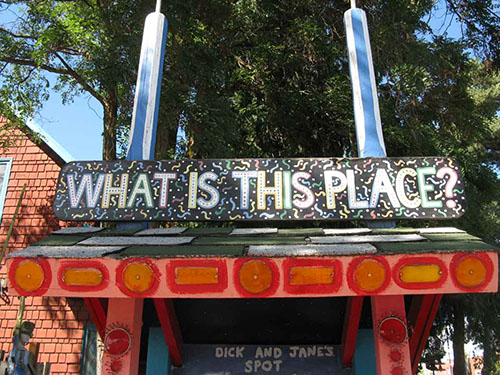 Toponymy Toponymy
The Encyclopædia Britannica defines toponymy as:
The taxonomic study of place-names, based on etymological, historical, and geographical information. A place-name is a word or words used to indicate, denote, or identify a geographic locality such as a town, river, or mountain. Toponymy divides place-names into two broad categories: habitation names and feature names. A habitation name denotes a locality that is peopled or inhabited, such as a homestead, village, or town, and usually dates from the locality’s inception. Feature names refer to natural or physical features of the landscape and are subdivided into hydronyms (water features), oronyms (relief features), and places of natural vegetation growth (meadows, glades, groves).
Toponymy is concerned with the linguistic evolution (etymology) of place-names and the motive behind the naming of the place (historical and geographical aspects). Most toponymy, however, has concentrated on the etymological study of habitation names, often neglecting the study of feature names and the motive behind the naming of the place (see the Britannica entry for the complete description).
What is Toponymy? "There is a name for every place and thing on a map. Have you ever wondered how the places and things that you see on a map got their name? Guillaume Valtat, a Geographic Information Engineer, explains Toponymy."
Toponymy (Wikipedia). The study of place names (toponyms), their origins, meanings, use and typology. Toponymy is itself a branch of onomastics, the study of names of all kinds. This page contains
a nice variety of toponymic oddities. Look at the lists of various topics, such as: List of places named for their units of production, or List of tautological (redundant) place names.
Sometimes a name is based on a foreign language and when used, redundencies occur (e.g., Rio Grande River; Picacho Peak). There is a list of some of these: double placenames. |
 |
|
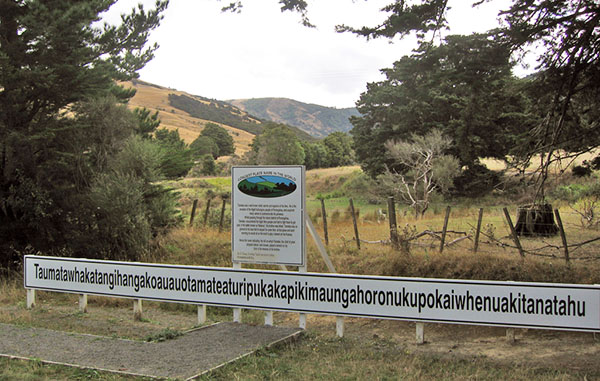
Longest placename in the World (New Zealand) |
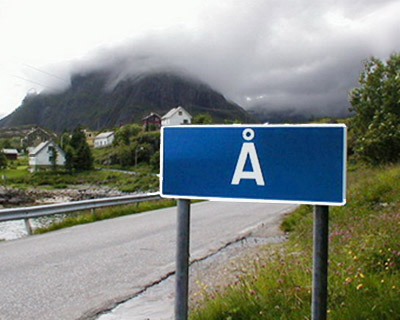
Å is a village in the municipality of Moskenes, in Lofoten, Norway |
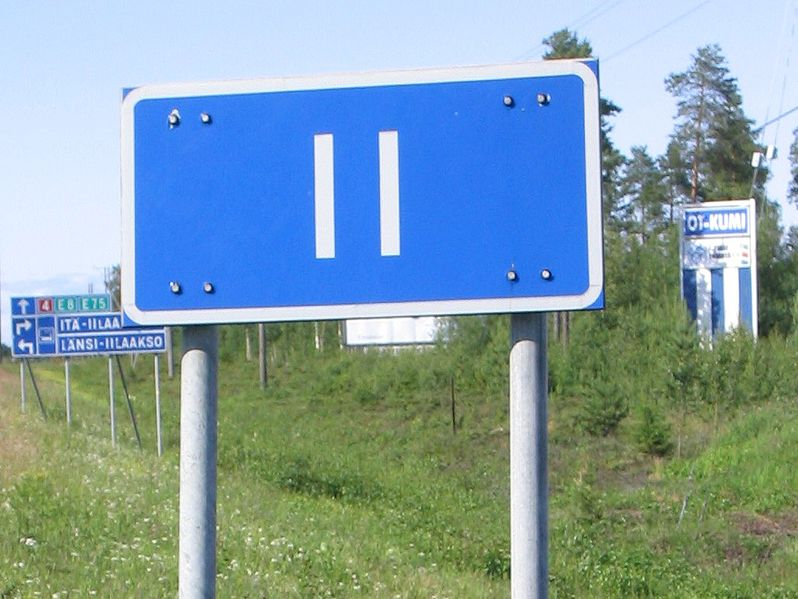
Shortest placename in the World (Finland) |
|
Names Related to Places, People, Ethnicity, and What Other People Think of Them (links to Wikipedia entries)
- demonym: a name, derived from a place name, for residents of that place (e.g., Utahn, from Utah, or Sioux Cityan, from Sioux City) — coined by George H. Scheetz, according to Paul Dickson in What Do You Call a Person From...? A Dictionary of Resident Names. The term first appeared in print in 1988 in Names' Names: A Descriptive and Prescriptive Onymicon by George H. Scheetz. See also taxonym.
- endonym: A self-assigned name by locals of a place. Also known as an autonym (not to be confused with the autonym in botany).
- exonym: a name used by one group of people for another group, but who call themselves by a different name, such as "Germans" for "Deutsche"; a place name used by one group that differs from the name used by the people who live there, such as "Cologne" for "Köln."
- ethnonym: a name of an ethnic group. A type of taxonym. Related to: exonyms and endonyms (autonyms).
- A toponymic surname is a surname derived from a place name. Think of German "von" or Irish "O'--." Originally, surnames were not common, especially among common people. Surnames became more prevalent once property and other laws made it necessary.

|
Nicknames
Nicknames can be created by the local population, by outsiders' perceptions, or can be derived from characteristics of a place.
Alphabet City |
Manhattan |
pleasant pun name for the Lower East Side neighborhood around Avenues A, B, C, D. |
Amerika |
United States |
KKK reference to U.S. from 1960s as a right-wing state; also Amerikkka |
Bag City |
Baltimore, Md. |
Mocking title of the city based on its name and the presence of bag ladies on the streets. |
Dead Moans |
Des Moines, Iowa |
Local nickname, regarded as dull and lifeless city. |
Deseret State |
Utah |
Mormon name for the state. |
Land of a Million Elephants |
Laos |
from Thai, Lanchang, million+elephant. Elephants have been vital to the country’s success, so much that they appear on the flag. |
Land of Dreams Come True |
Germany, 1930s |
Tourist promotional campaign slogan from pre-war Germany. |
Land of Political Exiles |
Yakutia, Russia |
Siberian state to which political nonconformists were traditionally sent. |
Skeleton Coast |
NW Namibia |
coastal region where numerous animal carcasses are strewn on the shore. |
So Cool |
Southern California |
Self-perceived image as a “cool, laid-back” place to be |
No Cool |
Northern California |
Self-perceived image as opposite of Southern California |
Uncle Sam’s Icebox |
Alaska |
Also called “Seward’s Folly” for the Secretary of State who brokered the purchase. Within a few years, Americans discovered vast riches in the new territory. |
Astronomy |
|
|
Dog Star |
Sirius, star in Canis Major |
Begins to appear early mornings in the East in August (Dog Days of Summer). Canis Major is the Great Dog, hence the "dog days" appellation. |
|
Western New York Names
Names in the area reflect both the Native American and classical words.
Buffalo, NY. Origins of the name (French or Indian?). Named after Buffalo Creek, which was either from French: Beau Fleuve "Beautiful River" or the French: Boeuf a Leau, "Oxen or Cattle at the Water." It may have been named for the American buffalo, which was known to roam the area. Or it was a misrepresentation of the Indian word for beaver. Another theory is that there was an Indian living there who looked a lot like a buffalo, or whose name meant buffalo ("De-gi-yah-goh," or "Buffalo")..
Native American place names in WNY
- Cattaraugus = Gah-ta-ra-ke-ras "stinking shore" or "foul-smelling river bank." Named because of the natural gas that oozes from the river mud.
- Chautauqua = Either “a bag tied in the middle” or “two moccasins tied together.” Describes the shape of Chautauqua Lake.
- Cheektowaga = Chictawauga, Ji-ik-do-wah-gah, "land of the crabapples" (Seneca).
- Erie = named for the Erie people (also called: Erieehronon, Eriechronon, Riquéronon, Erielhonan, Eriez, Nation du Chat). Erie tribal name means "long-tail."
- Niagara = On-ga-ria, On-guia-ahra, "The Throat" or "The Strait."
- Oatka Creek = means "leaving the highlands" or "approaching an opening" (Seneca).
- Tonawanda = Te-ni-wun-da; Ta-na-wan-deh. "swift water" or "confluent stream" (Erie or Tuscarora).
- Wyoming = "broad bottom lands" (Delaware).
However, Scajaquada is not an Indian word. Conjockety Creek is the original name of what is now, and has long been written, Scajaquada Creek. The creek was named after Philip Conjockety.
Other Local Names
- Amherst. Named for Lord Jeffery Amherst.
- Bagdad. Hamlet in the town of Collins.
- Brant. Named for Joseph Brant, the Mohawk chief (Tha-yan-da-nee-gah).
- Looneyville. Hamlet in the town of Lancaster.
- Wales. Named because its hills and green fields reminded settlers of the nation of Wales.
|
Native American Names
Native American terms used for place names occur across the United States and Canada. Some names are not even known to be from indigenous people, having been used for so long that no one is aware of their origin. For example, "Podunk," meant to describe a insignificant town out in the middle of nowhere, comes from a Natick Indian word meaning "swampy place."
Native American Names of 11 Major Cities
| Native Name |
Meaning |
Modern Name |
| checaugou |
"wild onions" |
Chicago |
| Coaquannock |
"grove of tall pines.” |
Philadelphia |
| Cuk Son |
"black base" |
Tucson, Arizona |
| Kaw-goosh-kaw-nick |
origin not known |
Ann Arbor, Michigan |
| Malbanchia |
"a place for foreign languages." |
New Orleans |
| Maliwu |
"it makes a loud noise all the time over there" |
Malibu, California |
| Manna-hata |
"island of the hills. |
New York City |
| Mennahatenk |
"where one gathers bows" |
New York City (alternate) |
| Ogapogee |
"the white shell-water place" |
Sante Fe, New Mexico |
| Pancanaset |
"little cleared place" |
Providence, Rhode Island |
| Seattle |
Chief Seattle |
Seattle |
| Shawmut |
"living waters" |
Boston |
Native Names Worldwide
Ayers Rock = Uluṟu (Australia)
Mount Everest = Sagarmatha (Nepali) and Chomolungma (Tibetan).
Several countries are making an effort to restore earlier indigenous names to their geography. Here are a few articles on this, or on native place names and the modern world:
Native American Riddles
American Indians were traditionally known to use riddles in various ways, including place naming, among others. Many times they would create a short riddle when referring to a concept that might be one that they would not speak aloud. This amounted sometimes to an unspoken code that other Indians (or those with patience to understand riddles) would be able to appreciae. Several resources include samples of these riddles from North American Indian speech.
- Bierhorst, John. Lightning Inside You: And Other Native American Riddles. HarperCollins, 1992 (ISBN:
9780688095826).
- Taylor, Archer. “American Indian Riddles.” The Journal of American Folklore 57, no. 223 (1944): 1-15. doi:10.2307/535750.
|
|
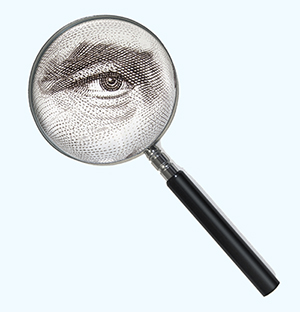 Critical Cartography Critical Cartography
Critical Cartography is a set of new mapping practices and theoretical critique grounded in critical theory. It differs from academic cartography in that it links geographic knowledge with political power. Critical cartographers do not aim to invalidate maps. Instead the critique is careful analysis of maps identifying attributes of the maps that are taken for granted. The eventual hope is to better understand the maps and gain more knowledge.
Critical cartography is the idea that maps are not neutral. They reflect and perpetuate relations of power. And these reflections are usually in the interest of dominant groups. Maps project our desires onto the landscape, they can map our hopes for the future, what we desire to see and that which we wish to ignore. The process of mapping can bring new ways of being and relating into the world.--Wikipedia article
|
|
Propaganda Maps
Pre-1492

|
|
Mayhem From Previous Classes
|
Just Fun Stuff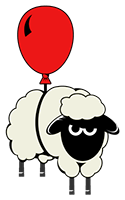
Backwards Names (ananyms)
Where are Alehagonom, Mateitna, Avalcalab? answers
Spell Backwards. Generates backwards spellings for text that you enter.
For geography, see: List of geographic names derived from anagrams and ananyms.
Make Your Own Names (Name Generators)
For use in writing, gaming, and anywhere that you need to create unique and fantastic names, while keeping to the spirit of the region you are naming.
- Fantasy Name Generators. Generate custom names based on real ones for a variety of contexts. Included are: Place names (pick a physical feature and get name list); Afterlife Names; City names; River names; Restaurant names, etc..
|
References
- Bright, William. Native American Placenames of the United States, 2007. 978-0806135984.
- Critical Cartography Related Entries (Making Maps: DIY Cartography
blog).
- Douglas-Lithgow, R. Native American Place Names of Massachusetts, 2001, 1909.
- Map Projection. It is important to understand that projections (the method of representing real-world features on a 2-D space) have a purpose and that the wrong projections can be misused or will provide an unintentional view of the world.
- Maxwell, Brandt. The Largest U.S. Cities Named After a Food: And Other Mind-Boggling Geography Lists from Around the World, 2004.
- Room, Adrian. Alternate Names of Places: A Worldwide Dictionary. Jefferson, N.C.: McFarland & Co., 2009 Lockwood Ref G105 .R648 2009.
- ________. Nicknames of Places: Origins and Meanings of the Alternate and Secondary Names, Sobriquets, Titles, Epithets and Slogans for 4600 Places Worldwide. Jefferson, N.C.: McFarland & Co., 2006 Lockwood Ref G105 .R65 2006.
- Satellite map images with missing or unclear data. Security and other concerns cause maps to be blurred over sensitive regions.
- Silences and Secrecy: The Hidden Agenda of Cartography in Early Modern Europe. Imago Mundi. 40: 57–76. doi:10.1080/03085698808592639.
- Taylor, Archer. “American Indian Riddles.” The Journal of American Folklore 57:223 (1944): 1-15. doi:10.2307/535750.
- Toponymy and Place Names. Discussion on place names and their importance. Author blog: Placeness is all about place names and their impact on society. Included is a list of the author's publications on toponymy.
- UNGEGN-ICA Webcourse on Toponymy (UN). A tutorial on toponymic taxonomy for professionals. Offers reasons why toponymy is important.
|
| Answers: Monongahela; Antietam; Balaclava. |
|
Where to Go Next
- UB Map Collection. Provides an introduction and finding tools to the Map Collection.
- Guides:
|

|
Last modified: 16 October 2019
David J. Bertuca, Map Librarian, Emeritus, University at Buffalo Libraries.
http://www.acsu.buffalo.edu/~dbertuca/maps/toponymics.html |





